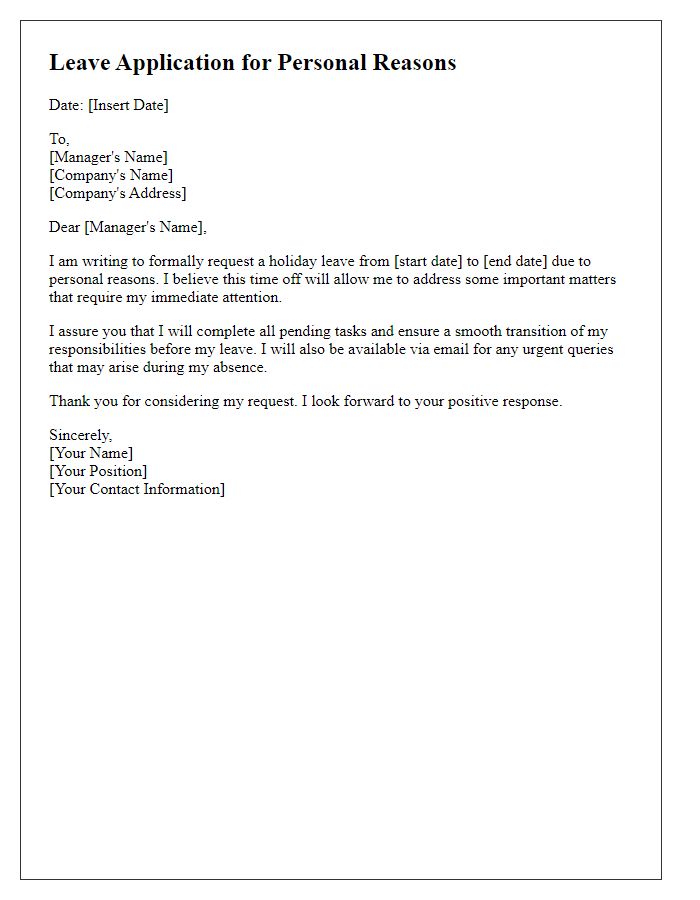Are you planning a holiday getaway and need a break from work? Crafting the perfect holiday leave application can make all the difference in ensuring a smooth transition away from the office. Whether you're heading to a tropical paradise or simply staying home to recharge, it's essential to communicate your plans clearly and professionally. If you're looking for tips on how to write a compelling leave application, keep reading for a handy template and helpful advice!

Applicant's personal information
A holiday leave application typically includes essential details such as the applicant's name, employee identification number, department, job title, and contact information. Specific dates for the requested time off, such as start and end dates, should be included. Additionally, stating the number of leave days requested and the reason for the holiday, whether personal, family-related, or for travel, adds clarity. Finally, a mention of willingness to assist in the transition during absence and gratitude for consideration can enhance the application's tone.
Dates of requested leave
Taking time off during the holiday season requires careful planning and consideration of company policies. Holiday leave typically spans from December 24 to January 1, aligning with festive celebrations such as Christmas and New Year's Day. When requesting leave, employees should specify exact dates, for example, starting on December 20 and returning on January 3, covering one or two weeks. It's important to communicate in advance, especially in busy workplaces, to ensure that team responsibilities are managed effectively. Indicating personal reasons or family commitments may also provide context for the request.
Reason for leave
During the upcoming holiday season, many employees may request leave to spend quality time with family or to relax and recharge. Common reasons for leave include celebrating Christmas (December 25) or New Year's Day (January 1) with loved ones, traveling to visit distant relatives, or participating in traditional festivities that may be unique to specific cultures or regions. It is essential for employees to submit their leave applications in advance, outlining specific dates and any necessary arrangements required to ensure smooth operations during their absence. Potential impact on team productivity and upcoming deadlines should also be considered while planning holiday leave.
Contact information during leave
During the holiday leave period, it is essential to provide updated contact information for seamless communication. Employees should include alternative contact methods, such as mobile phone numbers or personal email addresses, to reach them for urgent matters. Establishing an out-of-office notification response can inform colleagues of expected absence dates, ensuring they know when to expect a response. Additionally, detailing a point of contact within the workplace who can handle inquiries in the employee's absence enhances operational efficiency. Providing clarity on the availability during leave allows for better planning and management of tasks within the team dynamics.
Statement requesting approval
During the holiday season, many employees seek time off for personal rejuvenation and family gatherings. A holiday leave application typically includes essential details such as the specific dates requested (e.g., December 24, 2023, to January 1, 2024), the reason for the leave (family commitment, personal health), and the anticipated return date. It's crucial to ensure the details align with company policies regarding leave requests, which may require a minimum notice period or submission format. A well-structured request emphasizes the employee's dedication to their responsibilities and readiness to assist in ensuring a smooth workflow in their absence.













Comments